Amazon stands as a titan in the world of online retail, and it’s no surprise why – it’s a massive platform that makes it simple for buyers to shop and sellers to reach customers worldwide. Amazon has gotten so huge that it is the first place most buyers think of when shopping online.
Thanks to its robust infrastructure and global reach, Amazon is a platform where small businesses and large enterprises alike can flourish. It is a seller’s favorite, offering unparalleled access to a massive customer base.
Starting might seem tough, but it’s actually quite straightforward. This guide will break down how to sell on Amazon. Here’s what you need to know to begin.
Table of Contents
Understanding the Amazon Marketplace
The Amazon Marketplace is like a vast ocean of opportunities. It’s a place where sellers from around the globe converge to offer their products to millions of Amazon customers. Understanding this marketplace is key to harnessing its full potential.
Setting Up Your Amazon Seller Account
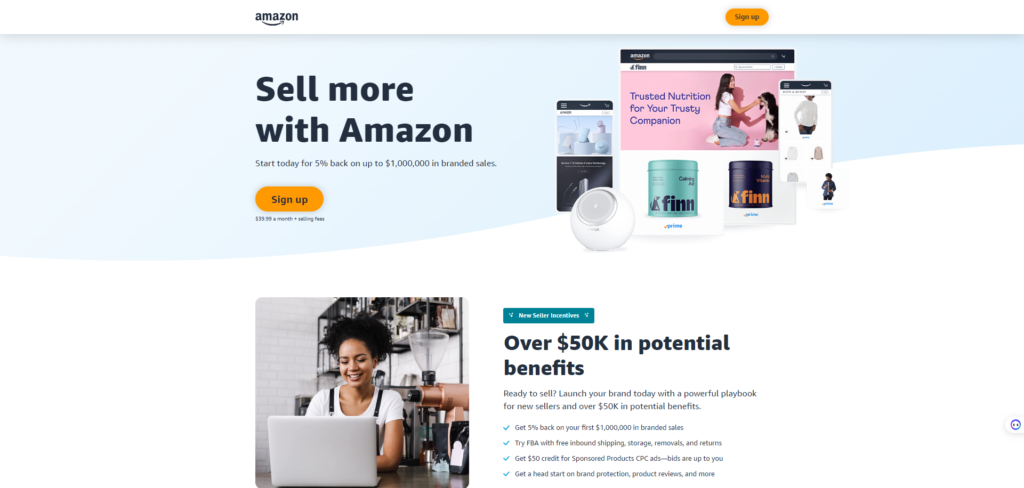
Embarking on your Amazon selling journey begins with setting up a seller account. This process is straightforward but requires attention to detail. You’ll need to decide whether you’re an individual seller or a business and provide the necessary information accordingly.
You’ll need a few things to create your selling account:
- Bank details (account number and routing number)
- Credit card
- Government ID (like a driver’s license)
- Tax information
- Phone number
Choosing Your Selling Plan
Choosing the right selling plan on Amazon depends on your business size, the number of products you plan to sell, and the flexibility you require to manage your sales. Amazon offers two primary types of selling plans: Individual and Professional.
- Individual Selling Plan: Opt for this plan if you’re starting small or plan to sell fewer than 40 items per month. It has no monthly fee; instead, you pay per item sold, which can be cost-effective for low-volume sellers.
- Professional Selling Plan: This is more suited for sellers who expect to sell more than 40 items per month. It includes a monthly fee, but the per-item fee is waived. This plan provides additional selling tools and is often necessary for selling in certain categories.
If you’re dipping your toes in the Amazon waters, the Individual plan might be your best bet. However, if you’re all in, the Professional plan is the way to go. The Individual plan is $0.99 per sale and suits those selling fewer than 40 items monthly. The Professional plan is $39.99 a month, ideal for more than 40 sales monthly, and offers extra tools and features.
Evaluate your business needs, projected sales, and each plan’s benefits to make an informed decision. Consider the following when choosing:
- Sales Volume: High-volume sellers benefit from the Professional plan, while occasional sellers may prefer the Individual plan.
- Access to Tools: The Professional plan offers advanced tools for inventory management, advertising, and eligibility for top placement on product pages.
- Category Restrictions: Some categories are only available to Professional sellers.
When choosing between Amazon’s Individual and Professional selling plans, there are several key differences to consider:
- Fees: The Individual plan typically charges a per-item fee on each sale, whereas the Professional plan involves a monthly subscription fee but no per-item fee. This makes the Individual plan more suitable for sellers who expect to sell fewer items, while the Professional plan is more cost-effective for higher-volume sales.
- Selling Limits: The Individual plan limits the number of items you can sell (usually around 40 items per month), making it ideal for smaller or starting sellers. The Professional plan, on the other hand, has no such limit, catering to sellers with larger inventories or higher sales volumes.
- Access to Additional Tools and Features: Professional sellers gain access to more sophisticated selling tools and features. These include inventory management tools, creating new product listings (if the product is not already on Amazon), and eligibility for top placement on product detail pages.
- Eligibility for Selling in More Categories: Certain product categories are only available to Professional sellers, expanding the range of items they can offer.
- Use of Amazon’s APIs and Third-Party Services: Professional sellers can integrate their accounts with Amazon’s APIs and various third-party services, offering greater control and automation over their sales processes.
- Advertising and Promotional Tools: The Professional plan allows sellers to run advertising campaigns and offer promotional discounts, which are unavailable with the Individual plan.
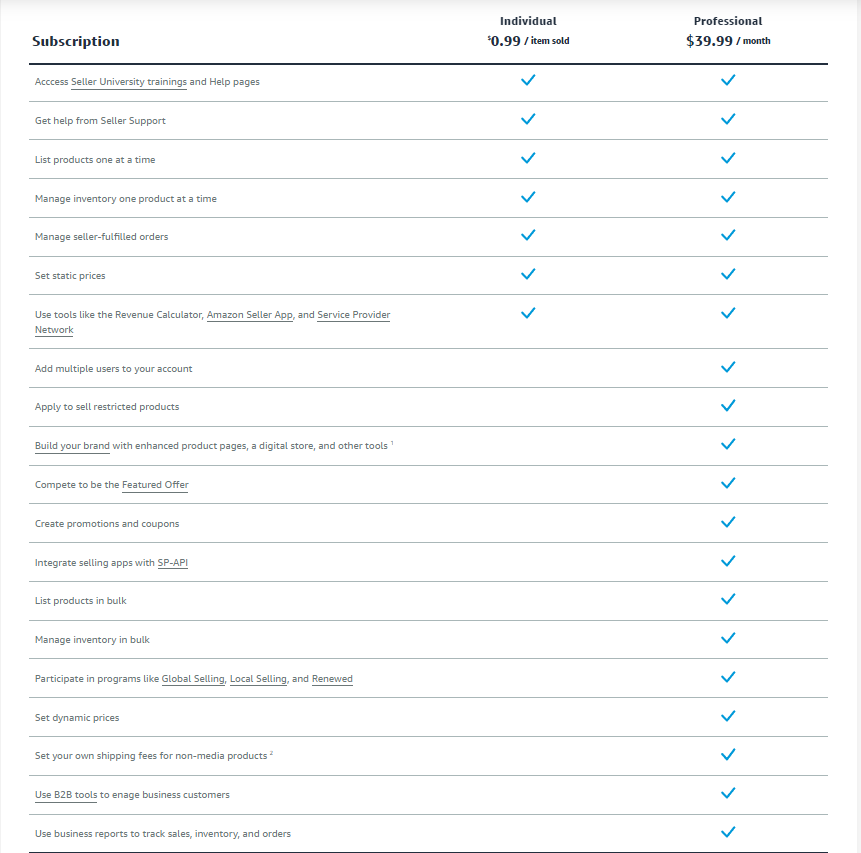
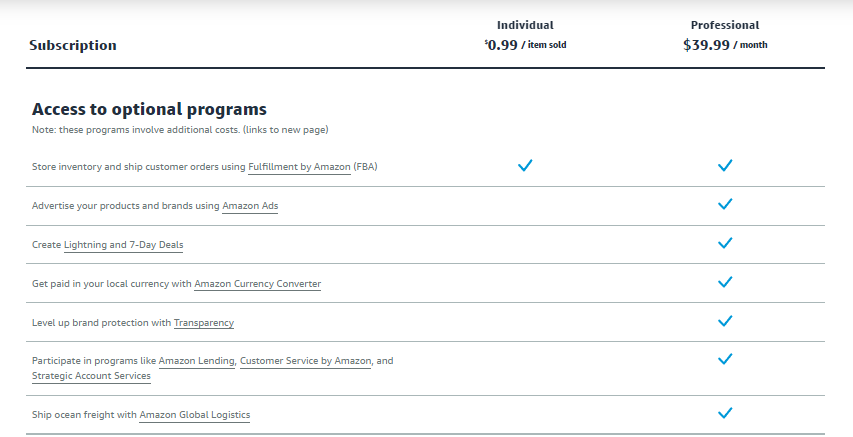
Product Sourcing and Selection
Product sourcing and selection are crucial for success when selling on Amazon. Start by identifying the products to sell, and finding out where you can source these products.
Identifying Profitable Products
Finding the right products is like searching for treasure. You need to identify items that sell well and offer good profit margins. Research and market analysis are your best friends here.
First, make sure your product isn’t on Amazon’s restricted list. Some items, like jewelry or fine art, need approval; others are completely off-limits due to federal regulations.
Focus on a niche with high demand and low competition to increase the chances of success. Check out popular and trending items for ideas using tools like SelltheTrend.com. Consider factors like cost of goods, Amazon fees, shipping costs, and competition to ensure the product can be profitable.
Once you’ve picked a product or niche, study the top sellers in that category. Is it a crowded market? Do competitors offer Prime shipping and have lots of high ratings? If so, breaking in might be tough.
Then, find a supplier and ask for samples to ensure quality. Order samples before committing to large orders. Think about private labeling, which is when a manufacturer puts your brand on an existing product. Calculate your cost per unit to see if the profit margin is good. You might have to test a few options before settling on your first product.
Sourcing Products to Sell on Amazon: Tips and Tricks
Once you know what to sell, the next step is sourcing these products. Here are some effective strategies for sourcing products to sell on Amazon:
1. Evaluate Profitability
Assess the potential profitability of each product by considering the cost of sourcing, shipping, and Amazon fees. Select products with a good profit margin after accounting for these expenses.
2. Retail and Online Arbitrage
Purchase products from retail or online stores at discounted prices and resell them on Amazon for a profit. This method requires careful market research and a great nose for finding deep discounts to identify profitable opportunities.
3. Wholesale Sourcing
Buy products in bulk directly from manufacturers or wholesalers at a lower unit cost. This strategy often requires a significant initial investment but can lead to higher profit margins. Platforms such as Alibaba and Global Sources allow you to search for and connect with manufacturers worldwide.
4. Dropshipping
Partner with a supplier who will handle inventory and shipping for you. You list the products on Amazon, and when a sale is made, the supplier ships the products directly to the customer. This method reduces the need for upfront investment in inventory.
5. Private Label Products
Create your brand by sourcing products from manufacturers and selling them under your name on Amazon. This method allows higher control over pricing, branding, and product differentiation.
To find manufacturers willing to do private labels, utilize online directories and databases such as ThomasNet or Jungle Scout Supplier Database, where you can filter searches for private label manufacturers. Websites like Wonnda connect you with private label manufacturers for various products and can provide examples of successful private label brands. You can also go to trade shows like the Canton Fair, which are excellent places to meet and network with manufacturers who offer private labeling services.
6. Direct Sourcing from Manufacturers
Establish direct relationships with manufacturers to source unique products at competitive prices. This is best for established sellers looking to create their own branded products. You can check out the Wholesale Directory, Merchandise Suppliers, and Dropshippers.
7. Market Research
Conduct thorough market research to identify niche categories with high demand on Amazon. Look for products with less competition but high customer demand. Another approach is to look for products with high customer demand but low satisfaction. This can indicate an opportunity to offer a better product in a popular niche.
Look for niches with fewer competitors. High demand and low competition can be a sweet spot for entering a market. Sometimes, a niche may be overlooked or underrepresented on Amazon. Filling these gaps can yield profitable opportunities.
Use tools like Google Trends and Amazon’s Best Sellers list to spot popular items and categories. You can also use Jungle Scout, AMZScout, or SellerApp, which can provide insights into sales data, competition, and market demand for different niches on Amazon.
8. Explore Auctions, Estate Sales and Thrift Stores
Source unique or second-hand items from auction and thrift stores, which can be sold on Amazon for profit. You can also check out estate sales, especially the multi-million dollar properties, as you will likely find high-end products and even brand-new items with tags you can resell. Use EstateSales.net to find estate sales and auctions near you.
9. Liquidation and Surplus Stocks
Purchase overstock, returned, or surplus products at a discounted price for resale on Amazon. Companies like American Merchandise Liquidators, Inc. offer surplus and liquidation products by pallets and truckloads. Other possible sources include MerchandiseUSA.com, DirectLiquidation.com, and Liquidation.com. Amazon Business also offers wholesale products that you can check.
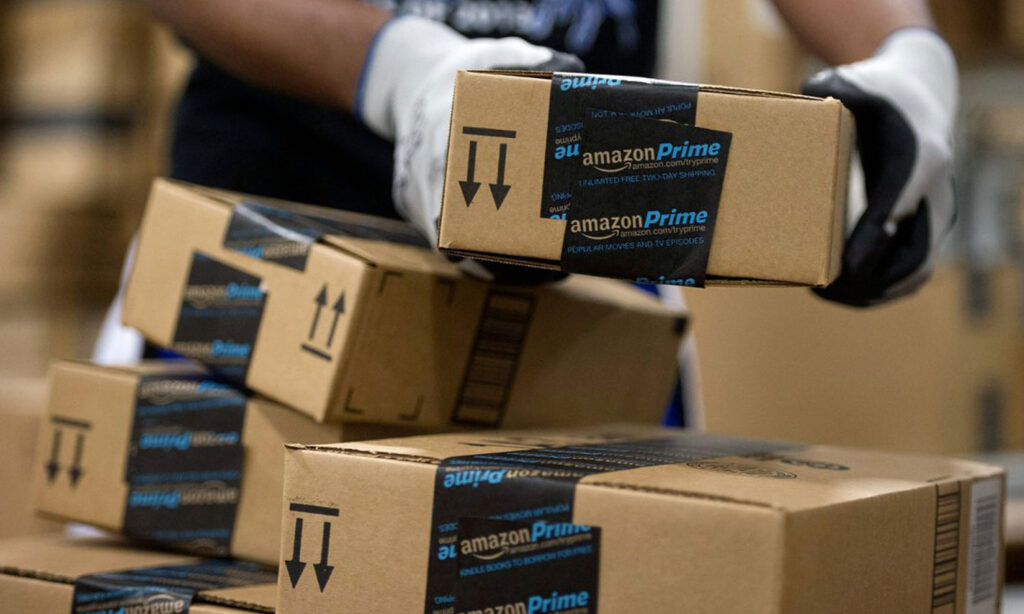
Listing Your Products on Amazon
Creating Compelling Product Listings
Your product listings are your storefront. A compelling listing includes a catchy title, a detailed description, and clear, high-quality images. It’s all about making your product stand out in the Amazon crowd.
You can add your products in two ways: use an existing listing for the same product or create a new one if you’re the sole seller.
Your listing should include:
- Product identifier (GTIN, UPC, ISBN, or EAN)
- SKU (stock-keeping unit)
- Price, condition, quantity, and shipping options
- Product name, brand, category, description, and images
- Keywords and search terms
Writing Descriptions and Bullet Points
The art of writing product descriptions and bullet points lies in highlighting features and benefits that speak to the customer’s needs and wants. It’s about painting a picture that lets the customer see how the product fits into their life.
Make sure your descriptions are SEO-friendly. If writing isn’t your thing, consider hiring a copywriter from platforms like Fiverr or Upwork.
Adding High-Quality Images
A picture is worth a thousand words, especially on Amazon. High-quality images can significantly enhance your product’s appeal, giving customers a clear and detailed view of what they’re buying.
Ideally, your photos should be on a white background and at least 500 x 500 pixels. For better quality, go for 1000 x 1000 pixels. You can use a lightbox for photography or hire a service to take pictures for you.
Amazon’s Fulfillment Options
You can choose from two main methods to sell on Amazon, and you can even combine them. For your bulkier, slower-selling items, you can handle the shipping yourself. You might want Amazon to do the shipping for your smaller, faster-moving products.
Amazon Fulfilled by Amazon (FBA)
Under FBA, you send your products to Amazon’s warehouse. When someone buys your product, Amazon takes care of the shipping. Remember, though, that you’ll pay a monthly fee plus additional fees for storing your items in their warehouse.
FBA is great for customer service, too, as Amazon handles it. If you don’t have storage space or don’t mind handing over control to Amazon, FBA could be a good fit. It’s especially suitable for products that are small, light, and sell quickly.
Fulfilled by Merchant (FBM)
Known as fulfilled by merchant (FBM), this option means you ship your products. You store and ship your products yourself and handle all customer service. It’s essential to have a system for managing customer questions and issues.
FBM works well for big, heavy items that don’t sell quickly. This way, you avoid paying for storage in an Amazon warehouse, which can get costly if your product sits there for a long time because of long-term storage fees.
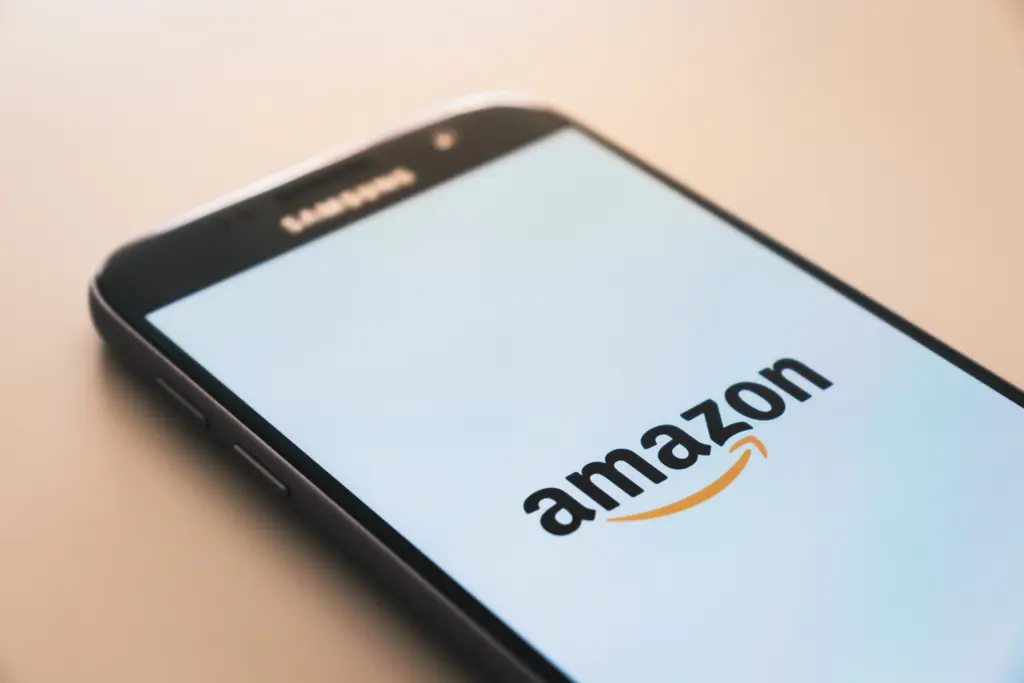
Other Tips on How to Sell on Amazon:
Draw in Customers
With so many listings on Amazon, you need to make yours pop. Here are some key ways to attract buyers:
- Competitive Pricing: Use Amazon’s tools to automatically adjust your prices to stay competitive while still making a profit. There’s also an option for bulk pricing to appeal to Amazon Business shoppers.
- Fast Shipping: If you’re not using Amazon Prime, the next best thing is to ship your products quickly through FBM (Fulfilled by Merchant).
- Sponsored Listings for Ads: Turn your listing into a sponsored one so it shows up in search results and on product pages. These ads are cost-per-click, meaning you pay each time someone clicks your ad, regardless of whether they buy or not. Costs can vary from a few cents to several dollars per click.
Encourage Reviews
Reviews on Amazon are critical for sellers as they provide social proof to potential customers that a product is worth purchasing. They can significantly influence sales and ratings since many buyers rely on the feedback of others before making a purchase decision.
To encourage reviews on Amazon, sellers can:
- Use Amazon’s “Request a Review” button. This sends a review request directly through Amazon’s own system.
- Utilize Jungle Scout’s Review Automation feature: This tool helps automate customer review requests.
- Enroll in the Amazon Vine Program. This program allows trusted reviewers to provide honest feedback on new products.
- Express Gratitude in Communications: Thank customers for their purchase and explain how reviews can help your business.
- Add Product Inserts: Include a polite request for a review together with the product packaging.
- Leverage Email Newsletters: If you have a customer email list, you can send a newsletter asking for reviews.
- Politely ask for a review without offering any compensation, free products, refunds, or discounts.
- Join Amazon’s Early Reviewer Program, which encourages genuine reviews.
While seeking reviews, it’s essential to comply with Amazon’s policies to avoid any violations that could negatively impact your seller account. Be careful when asking for reviews. Amazon has strict rules. Offering incentives for reviews can lead to your account being banned, funds withheld, or even legal action. Remember, just because another seller is doing something doesn’t make it right. It’s not worth risking your account.
Wrap Up
Selling on Amazon is straightforward, but success depends on picking the right products and optimizing your listings. To stay ahead, continuous maintenance and adaptation are key.
FAQs
How much does it cost to start selling on Amazon?
The cost of starting on Amazon varies depending on your business model, product choice, and the selling plan you choose.
Can I sell on Amazon as an individual?
Yes, you can sell on Amazon as an individual using the Individual selling plan, which is best suited for sellers who plan to sell fewer than 40 items per month.
What are the most profitable products to sell on Amazon?
Profitable products vary with market trends. However, categories like electronics, home & kitchen, and health & personal care often have high demand.
How do I get my products to rank higher on Amazon?
Optimized listings, competitive pricing, good customer reviews, and effective use of Amazon Advertising have achieved high rankings.
Is it better to use FBA or FBM when I sell on Amazon?
The choice between FBA and FBM depends on your business needs, resources, and preferences. FBA offers convenience, while FBM gives you more control over your inventory and shipping.
This concludes our comprehensive guide on how to sell on Amazon, crafted with SEO optimization, conversational style, and a focus on providing value to the reader.


Your article helped me a lot, is there any more related content? Thanks!